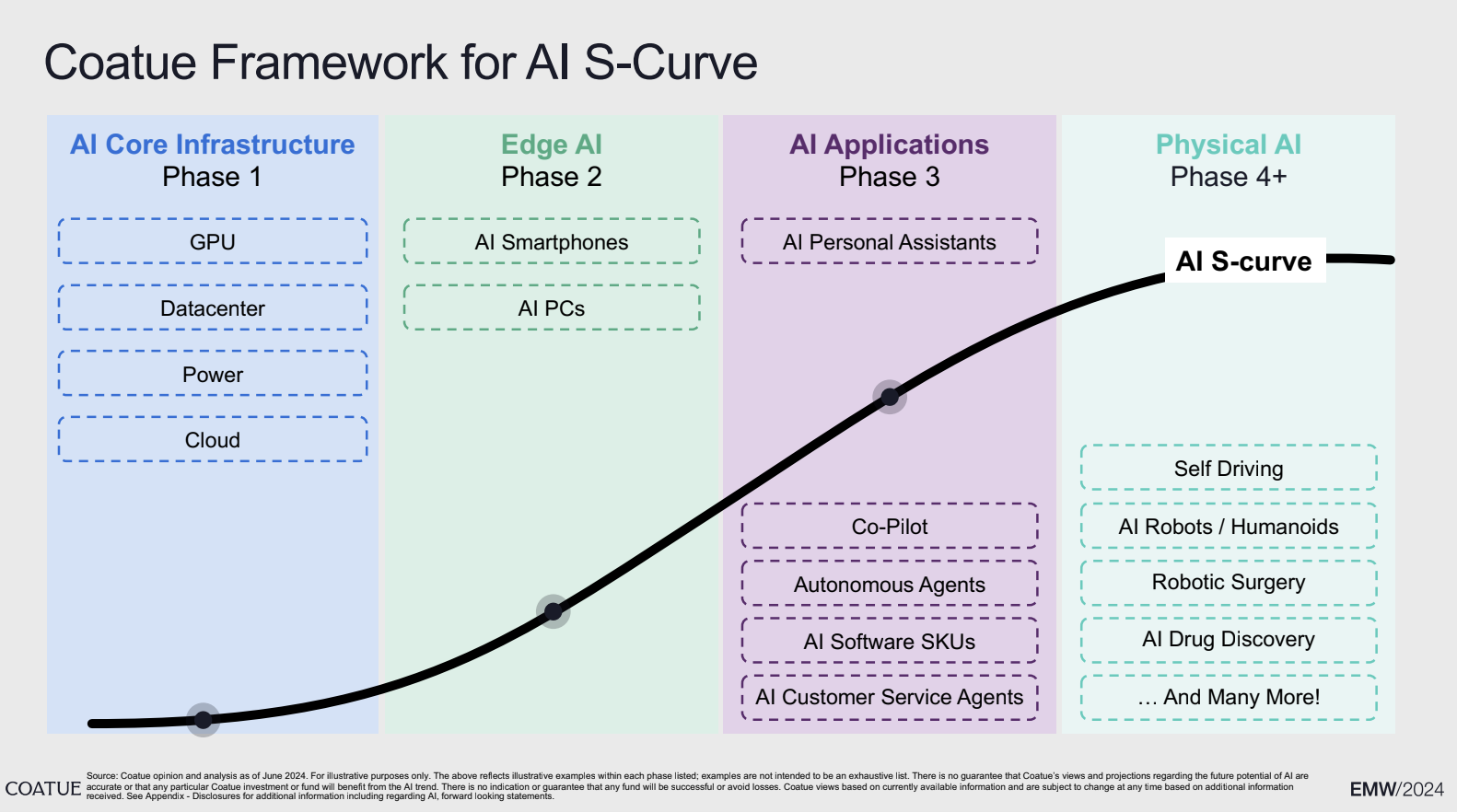Why AI
Understanding the transformative potential of artificial intelligence and where we are on the adoption curve
Last updated: May 2025
The AI S-Curve

Source: Coatue opinion and analysis as of June 2024. For illustrative purposes only.
Phase 1: AI Core Infrastructure
This foundation phase represents the development of key technologies powering AI: cloud computing infrastructure, specialized hardware (GPUs, TPUs), fundamental models, and essential data management systems. This phase enables all subsequent AI innovation.
Phase 2: Edge AI
As AI becomes more accessible, we see increased implementation of AI capabilities in existing business systems. This includes API-based integrations with models like ChatGPT, Anthropic Claude, and others. Businesses are finding ways to enhance their operations with AI capabilities.
Phase 3: AI Applications
The next evolution involves building software applications with AI at their core. These solutions are designed from the ground up with AI capabilities, rather than simply adding AI to existing systems. We're seeing the rise of copilots, autonomous agents, and AI-native applications.
Phase 4+: Physical AI
The frontier of AI development involves bridging the digital and physical worlds. This includes robotics, autonomous vehicles, industrial automation, and other areas where AI directly controls or interacts with physical systems and environments.
Why AI Matters Now
We are at a critical inflection point in the AI S-curve, transitioning from early infrastructure to widespread application. This creates unprecedented opportunities for those who can effectively leverage these technologies.
- AI is becoming increasingly accessible to non-specialists
- The economic impact of AI is beginning to accelerate across industries
- Early adopters are gaining significant competitive advantages
- The skills gap between AI-proficient and non-proficient professionals is widening